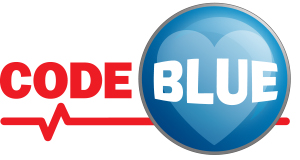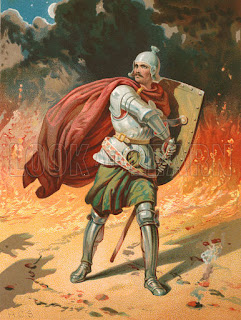The Certainty of Death
There are times that I wonder why over the years that I have felt such clarity
about the matter of life and death. The theme of the brevity of life and the
length of eternity has worked its way into much of my preaching for more than 30
years. Sometimes the weighty subject of death has caused more than a few to
wonder why I get so intense about it. I am now at the age where I know that my
life is more than half over.
That is not necessarily a morbid thought—at least it shouldn’t be—but it is one that needs to press to the forefront of my mind so that there is little wasted time with what I have left. I am also at the age where I am looking back in a contemplative manner at some of the roads that I have traveled and some of the choices that I have made. There are some regrets I have gathered and there are some victories that are along the way. Maybe this is the pattern with most people who are at mid-life and beyond.
That is not necessarily a morbid thought—at least it shouldn’t be—but it is one that needs to press to the forefront of my mind so that there is little wasted time with what I have left. I am also at the age where I am looking back in a contemplative manner at some of the roads that I have traveled and some of the choices that I have made. There are some regrets I have gathered and there are some victories that are along the way. Maybe this is the pattern with most people who are at mid-life and beyond.
Having read a lot
of the works of the Puritans over the years I am reminded that throughout their
many sermons and biblical writings that death was a frequent subject that they
were very familiar with. Many of the people who lived during that time era knew
what it was to have children to die, sometimes several children, mothers would
die in childbirth, they knew what it was like for farming accidents to take the
lives of loved ones, diseases that are now easily eradicated with modern
medicine was not as available to them, therefore death was the great enemy that
lurked about their daily lives regularly. Preachers did not shrink back from
that subject in their preaching. It also caused them to fill their sermons with
theological matters of heaven and the afterlife far more than what our modern
pulpits do, and I think that we are theologically, spiritually, and morally
poorer for that choice.
One of the recurring memory roads that I have traveled
down in the last several months is something that happened in late August 1985.
At that point in time, I am not quite nineteen years old and I have finished two
semesters of the RN program that I would graduate from in a little more than a
year from that point. I have just started working at
Flowers Hospital
in Dothan, a 235-bed privately owned hospital, as an orderly. The orderly title
would be changed not too long afterwards to patient care tech which is what they
are mostly known as these days. But that job would bring an exposure to the
impact and effect of death for the next 30 years and beyond as I navigated a
path in medicine at various facilities although most of those years being at
Flowers Hospital.
The time on that hot summer night is somewhere between
10:15-10:30 PM and I am up on the sixth floor with Mike Walker who is exactly
one year ahead of me in nursing school. I would later work with Mike for several
years in our SICU at Flowers. It was a trauma unit that had a host of head
trauma, motor vehicle accidents, brain tumors, cerebral aneurysms, large lung
and abdominal surgical cases. It was a very challenging intensive care unit to
work in especially if you are only 20 years old. At that time in my life, my
plans were to go on to anesthesia school and you were required to have the
necessary ICU experience to apply. However, on that late hot August night, Mike
is training me in a month-long orientation process. Mike is everything that I
was not—cool, savvy, self-assured and almost four years older. We are both
decked out in hospital whites and bright white Nikes or Converses which was the
required dress code at the time. There is a large cart from the dietary
department that we have retrieved from the first floor to pick up late dinner
trays. If patients were not finished with their meals when the trays were picked
up earlier in the shift, they ended up in the dirty utility room and our job was
to make a last run through all of the floors at the end of the shift and take
them to the dietary department.
As we are loading several trays on the top
floor, we hear the words “CODE BLUE ER” announced over the public address
system. Those are the ominous words that indicate either a respiratory or
cardiac arrest has taken place and an immediate response is needed. Some
hospitals have replaced those broad announcements because of the use of
smartphones that are used by rapid response medical teams these days. I remember
I had been working at Flowers for almost two weeks and on that night, Mike and I
responded to my first code. He had already told me that our job was to provide
chest compressions while the rest of the code team did their part with
respiratory, pushing IV drugs, getting more IV’s started, and defibrillation.
Mike also told me that it you can get worn out very quickly while you are doing
chest compressions and that he would start and then swap out with me.
The crazy
thing about this night is that there is almost an instant recall of the events
whereas there are things that I was involved with two months ago that I can
hardly remember. I remember us running down the hall of the 6th floor and
hitting the fire exit at a full bore. We went down six flights of stairs in that
stairwell before being deposited at the other end of the hospital from the ER
although that stairwell was the closest one. We bang open the door and go
charging down that long hallway that was probably 100 yards long. We get to the
ER and see a group of nurses, respiratory therapists, and a physician huddled
around a stretcher. Mike moves toward the front of the stretcher and replaces
someone who has already started doing chest compressions. You have to stand on a
small stool at the bedside when you are doing compressions to give you a better
angle to have more strength for compressions. I am standing behind Mike waiting
for him to tell me when to start as we will rotate out. Code Blue situations can
be extremely chaotic, or they can be eerily calm and usually the person who sets
the tone is the physician who is running the code. If he is mindlessly cussing
and wringing his hands, it’s going to be bad; however, if the physician calling
the code is calm and smooth, it passes down to the team that is working the
code. On that night, a physician who generally was as calm as a cucumber was in
charge.
Dr. Carl Barlow
was the ER doctor that night and he had obviously worked through this situation
before. Also working the code that night was Cindy Woodham who was an RN and she
did her job at an excellent level also. Of course, at the time, I had no idea
how intertwined my life would be with both Mike and Cindy (who would be one of
my nurse managers for four years later on in MICU). Mike and Cindy both are
still at Flowers to my knowledge. Mike served in an administrative role and
Cindy went on to become a nurse practitioner. Both of my sons have ended up
working with Mike as well which again sums up how small and interconnected our
worlds are.
But back to the code, when I swapped with Mike, he told me that I
would probably break some ribs of the patient until I got the feel of doing
chest compressions. Sure enough, I can still remember the feeling of ribs most
likely separating from the sternum and the cartilage popping being similar to
breaking a wooden pencil. Chest compressions on a real patient is much different
from doing it on the dummy that is used in BCLS. But you pick up with the
learning curve and soon get proficient enough that ribs aren’t broken while you
are doing the compressions. While compressions are being done, the respiratory
team is prepping an endotracheal tube to intubate the patient to provide a more
stable airway, IV’s are being started, and there is that ever present cardiac
monitor that is depicting a squiggly green line that is either asystole
(flatline) or V-fib (ventricular fibrillation meaning the heart is just a
quivering mass) or V-tach (ventricular tachycardia meaning the bottom portion of
the heart is out of control and has no sync with the upper portion). If you know
ACLS (advanced cardiac life support) you read the monitor and then give the
appropriate drugs in an effort to offset the dilemma of a stopped or failing
heart. You can also use paddles (in the old days) or pads to deliver an electric
shock to the heart in an effort to get it going. The lab staff is there so they
can run blood samples to see if there is some electrolyte imbalance that needs
to be corrected so that it can give the patient a fighting chance to live. While
all of that is going on, the paramedics are describing what they have discovered
during their field work of bringing the patient in that may be helpful
concerning a medical history.
While the code was progressing, bits and pieces of
the story started coming out about an altercation with a family member that this
patient had gotten involved with earlier in the day. It had come to physical
blows and the patient had gotten the worst end of it. As the day had moved on,
the stress of the domestic situation had apparently brought on a heart attack in
the victim and now a medical team is trying to resuscitate the patient. This
won’t be the last time that I would witness some familial problems affecting a
patient toward a bad outcome. On that night, we would not be successful despite
working for more than 30 minutes in the code before another life was ushered out
into eternity. At that very moment, I am three weeks away from my 19th birthday
and for the first time in my life, I see someone die right in front of my eyes.
Looking back, I may have been far too young to be exposed to that kind of thing,
but it was the direction that my life was taking in the field of medicine.
By
the time I was 22, I had seen children die, young people die, middle-aged people
die, and elderly people die. Some of these patients who were terminal were in
and out of the hospital enough times over a period of months that I was able to
make some connection with them and their families. For instance, elderly Mr.
Sanders who had a horrific battle with cancer. We got very involved with him and
his wife during his ordeal to the degree that many of us were crying with the
family that night he died. Gunshot wounds, car accidents, heart attacks, head
bleeds, and bouts with various cancers would lead to death. As the years clicked
by more and more I was up close to death on a very regular basis.
What does that
do to you? As a medical professional, if you aren’t careful, you can get
hardened to the suffering and death. If you are pastor, it makes you more
concerned about the final state of the souls of people! It moves passion into
your work of preaching and of prayer. Sadly, most people believe that they will
go to heaven by default just by virtue of being a “good person.” No deceptive
lie is more deadly than that one! There is a certainty of death that all of us
with contend with and how we live out our lives here, how we respond to the
gospel makes all the difference in the world and in eternity!
Thanks for
stopping by. . .
Philip Harrelson
May 2, 2022






Comments